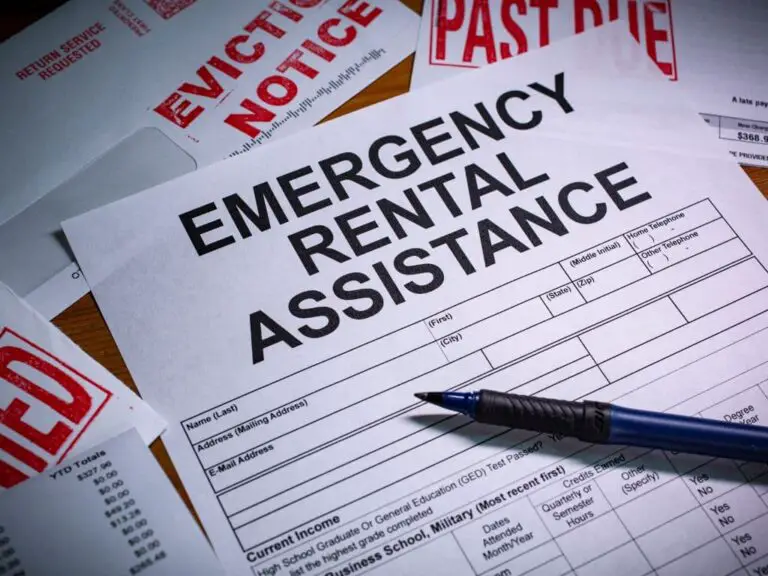Section 8 Senior Assisted Living: Accessible Housing and Supportive Services
Section 8 senior assisted living combines affordable housing assistance through the federal Section 8 Housing Choice Voucher program with the services and amenities provided by assisted living facilities. This allows low-income seniors to obtain the extra support they need to continue living independently while spending only 30% of their adjusted gross income on rent and utilities.
The key benefits of Section 8 senior assisted living include:
- Affordability: Section 8 vouchers make assisted living affordable by covering a portion of the monthly rent and utilities.
- Access to Care: Seniors get the assistance they require for daily activities like bathing and dressing.
- Independence: Section 8 allows seniors who don’t require round-the-clock nursing care to live on their own with some extra help.
- Resident Choice: Seniors can choose an assisted living facility that meets their needs and preferences.
- Accessibility: The program is open to any senior who meets eligibility criteria regardless of demographic factors.

Who Is Eligible for Section 8 Senior Assisted Living?
Eligibility for Section 8 vouchers is primarily based on household income and family size. In most cases, your household income must be below 50% of the area median income for your family size. Priority is given to seniors with extremely low incomes below 30% of the area median.
Other eligibility factors include:
- Citizenship status: You must be a U.S. citizen or eligible non-citizen.
- Criminal record: You can be denied for certain criminal convictions within the last 5 years.
- Eviction history: Recent evictions may disqualify you from Section 8 housing.
- Residency: You must live within the jurisdiction of the local public housing agency to qualify.
How to Apply for Section 8 Senior Assisted Living
You apply for Section 8 through your local public housing agency (PHA). Here are the key steps:
- Check if the waiting list is open. Many PHAs close their lists when demand exceeds available vouchers.
- Gather documents. This includes ID, social security cards, birth certificates, income/asset proof, and family information.
- Submit a pre-application. This is used to do an initial eligibility screening.
- Complete the full application. If eligible, you’ll need to provide all required documentation.
- Attend an interview. A PHA rep will confirm your eligibility in person.
- Get on the waiting list. If approved, you join the waiting list which can take months or years.
- Receive a voucher. When your name reaches the top, the PHA will issue you a housing voucher.
- Find Section 8 approved housing. You have 60+ days to locate a unit in an assisted living facility that accepts Section 8.
What If Your Section 8 Application Is Denied?
You can appeal a Section 8 denial within 10 days. Provide evidence challenging the reason given for denial. Discrimination is also grounds for appeal. You can also reapply after 1 year if your circumstances change. Getting legal help improves your chances of a successful appeal.
How Long Is the Waiting List for Section 8 Senior Assisted Living?
Wait times for Section 8 vary, but the national average is around 2.5 years. However, in some cities the wait can extend to 5-10 years due to high demand and limited funding. The wait also depends on your priority status.
Seniors may get priority, moving your application higher up the waiting list more quickly. Checking with your local PHA will give you the most accurate estimate for your area.
What Are the Requirements for Section 8 Senior Assisted Living?
To use your Section 8 voucher at an assisted living facility, the facility must meet certain HUD requirements:
- Be licensed and regulated by the state
- Pass inspection by the PHA
- Have a contract with the PHA to receive payments
- Offer services like cleaning, meals, transportation
- Provide private living quarters with lockable doors
- Allow residents to furnish their own rooms
- Ensure staff available 24/7 to respond to emergencies
How Does Section 8 Work With Assisted Living Facilities?
A Section 8 voucher recipient finds an assisted living facility they like that meets HUD’s requirements. They arrange to rent a room in the facility.
The PHA will then:
- Inspect the facility and room to ensure it meets standards
- Approve a contract with the assisted living facility
- Calculate how much of the rent you pay (around 30% of your income)
- Pay the remaining portion directly to the facility each month
- Annually re-inspect and recertify your eligibility
This allows the senior to afford assisted living while only contributing 30% of their adjusted monthly income.
What Services Are Offered in Section 8 Senior Assisted Living?
Standard services covered in the monthly rent at assisted living facilities include:
- 24/7 staffing and emergency response
- Housekeeping and laundry
- Meals and kitchen access
- Medication management
- Social and recreational activities
- Transportation
- Personal care aides to assist with dressing, bathing, grooming
Additional services may be available for a fee:
- Physical therapy
- Skilled nursing
- Dementia care
- Hospice care
The services offered will depend on the particular facility. Touring facilities before choosing one allows you to find the amenities you need.
What Financial Assistance Is Available for Section 8 Senior Assisted Living?
In addition to Section 8 vouchers, here are some other sources of financial assistance for senior assisted living:
- Medicaid: Covers some assisted living costs depending on your state’s criteria.
- Veteran’s Benefits: The Aid and Attendance benefit helps veterans and surviving spouses pay for assisted living.
- Long-term Care Insurance: Policies with an assisted living facility rider can cover some costs.
- Reverse Mortgage: Can provide funds to help cover assisted living by borrowing against home equity.
- State Assistance Programs: Some states offer financial assistance for assisted living if you meet income requirements.
Finding all possible assistance can help lower out-of-pocket costs for seniors who want to live in assisted living facilities.
How Can You Find a Section 8 Approved Assisted Living Facility?
To find Section 8 approved assisted living facilities:
- Talk to your PHA. Ask for a list of assisted living facilities currently working with the Section 8 program.
- Contact assisted living facilities. Ask if they accept Section 8 vouchers and work with your local PHA.
- Search online directories. Websites like SeniorAdvisor.com list Section 8 approved facilities.
- Check with Medicaid. If you receive Medicaid, your state Medicaid office may list Section 8 facilities it has approved.
Tour the potential facilities to make sure they offer the care and amenities that match your needs and preferences. Compare the out-of-pocket costs across options after your Section 8 voucher is applied.
What Is the Difference Between Section 8 and Other Housing Assistance Programs?
Section 8 provides vouchers that recipients can use to rent housing in the private market, including assisted living facilities. Public housing refers to housing developments owned and managed directly by local housing agencies. With Section 202 housing, HUD provides funding to nonprofits to construct senior housing and also provides rental assistance. However, there are long waitlists for all these programs due to limited funding.
The key differences are:
- Flexibility: Section 8 vouchers allow recipients to choose any qualifying housing, including assisted living facilities. Public housing and Section 202 require living in specific HUD-funded developments.
- Availability: public housing and Section 202 have even longer wait lists and more limited availability than Section 8 in most areas.
- Direct HUD Oversight: Public housing developments are directly owned and managed by local public housing authorities, which are overseen by HUD. Section 8 and Section 202 provide funding to recipients but allow more autonomy.
- Level of Care: Assisted living care is available through Section 8. Public housing only provides affordable housing, not assisted living services. Some Section 202 housing incorporates supportive services for seniors that are less extensive than assisted living.
Conclusion
In summary, Section 8 vouchers offer seniors more options to find assisted living and enter facilities quicker due to typically shorter wait times. However, funding shortfalls for all these programs result in long waitlists, making applying as soon as you’re eligible important.






